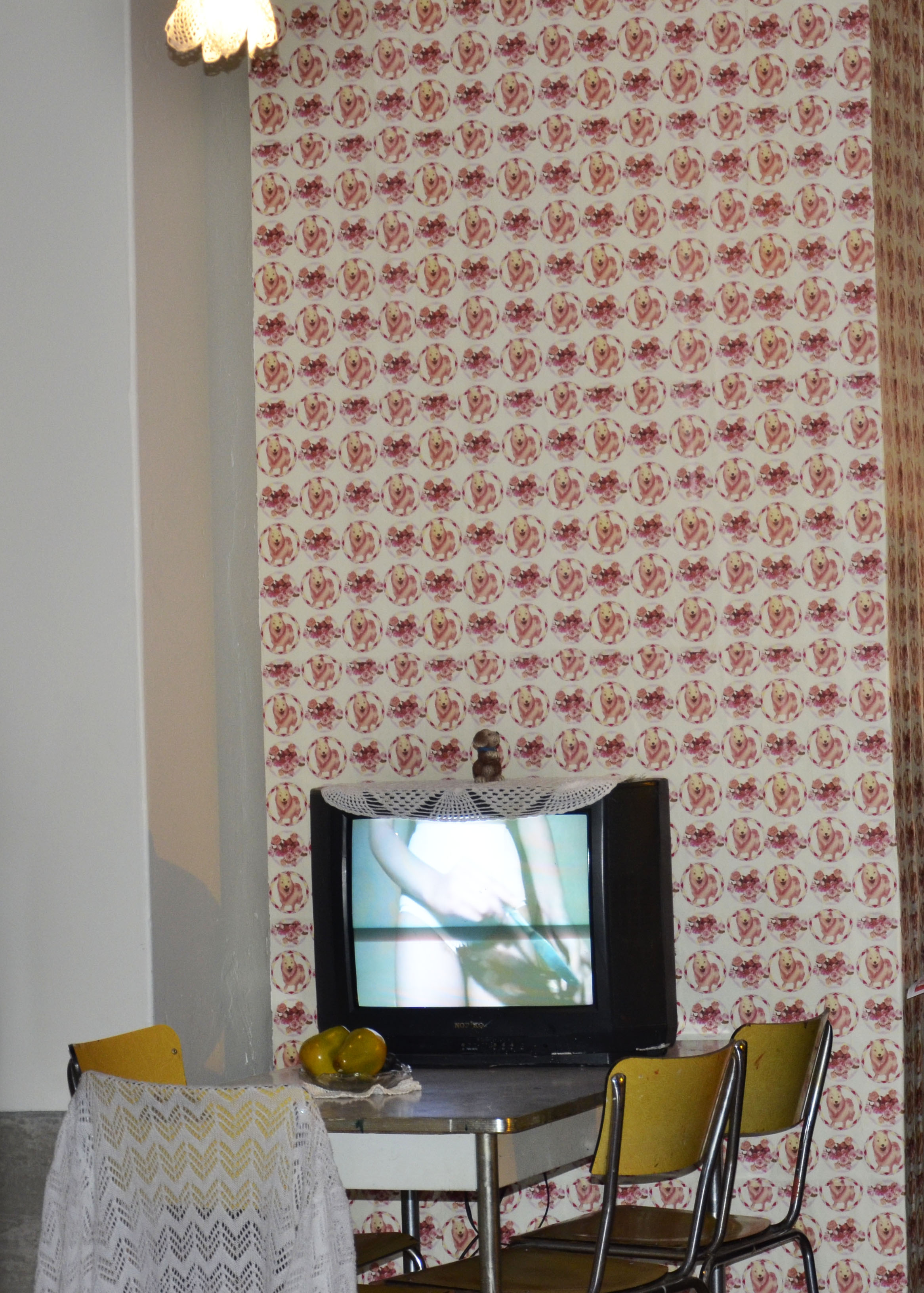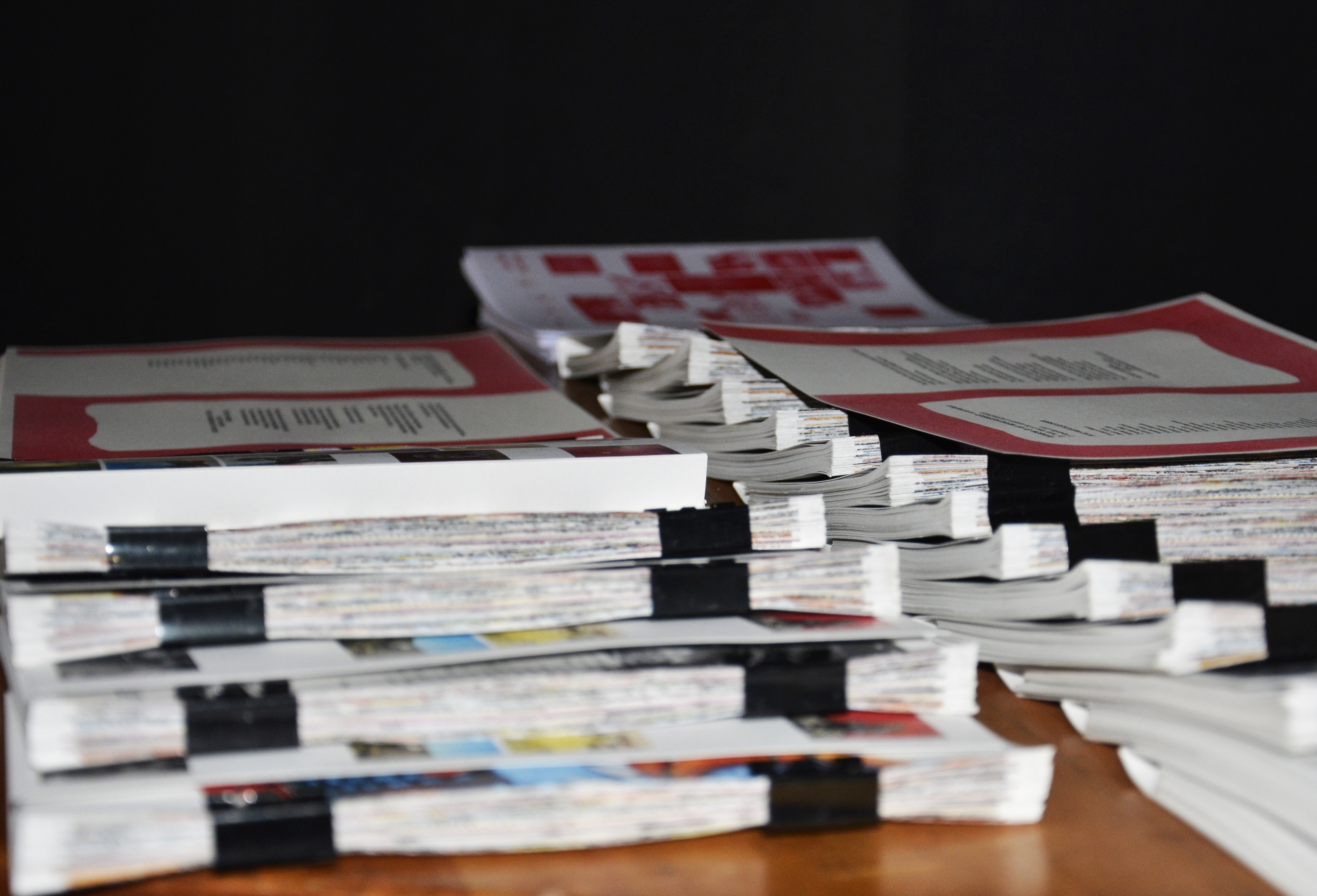If you have spotted stickers with images of cracked eggs or seen people walking around Braamfontein with the same image printed on black and white t-shirts, don’t worry. This is not the beginning of an egg worshipping cult. This playful image was chosen by the Wits Fine Art graduating class of 2018 to guide you to their work on display at WAM, The Point of Order, Arthouse Studios and window as well as the Wits School of Art basement. Having followed the egg trail myself, I was greeted by artworks that are deeply embedded in the political conversations present in South Africa.
With each artist working from different intellectual frameworks, themes and art practices, there was an unintentional thread that stitched individual elements into a collective sentiment – an indication of how these artists are creating work that is reflective of South African youth’s interrogation of form, methodology, pedagogy, identity politics and space. Their work demonstrates engagements with history not only as a resource, but also as a constructed narrative that needs to be pluralized, reworked, rewritten and re-imagined.
I am unable to attend to each artist’s work in depth in this article, so I will instead mention themes present in the grad show through certain artists that are representative of this collective sentiment.

Poking holes at constructed categories and gender roles that have been guarded by heteronormativity, patriarchy, the pathologising of certain bodies and the fragility of toxic masculinity. Works by Dominique Watson, Pennelope Vanessa Muduvhadzi and Lebogang Mogul Mabusela offer insights into the traumatic effects of these categories and the experiences they engender, as well as present forms of protection and the reworking of gendered words as interventions that attempt to cut through the violence against certain bodies. Tarryn Junkoon thinks through femininity and the positioning of the female body within the intersections of religion and culture, highlighting the rejection of certain expressions of womanhood. Allyssa Herman recreates her grandmother’s kitchen space, pointing at the knowledge present in this space, and bringing to light thinking around alternative archives and forms of knowledge production.
In the show there is also work that explores cultural crossovers from different conceptual and methodological vantage points. Cheriese Dilrajh taps into her interest in experiencing what it means to belong to something and be disconnected from it at the same time, learning from her own history and how she borrows from other people’s histories. This is unpacked through exploring the migration of textiles and baskets and how they gain new meaning and are adopted by new cultures, while tapping into the violent history of the industrial revolution and the commodification of such products. Xiao Cheng Hu’s stance that nothing exists in isolation stems from his own cross cultural references – South Africa and China. His paintings combine methods and symbolic images from these cultures with a formalist approach, with the intention of finding a form of unity within the diversity of visual culture as a global language.

Creating work that responds to intense emotions is carried throughout the show. Melissa Dyke creates portraits of residue through her prints and paintings informed by her feelings as a result of witnessing or experiencing racist and prejudiced interactions. These bleeding disfigurations are an attempt to uncover the messiness of a “post-apartheid” mentality, continued racism and how this toxicity can putrefy the body. Joe Turpin, inspired by allegories and mythology, explores love, loss, mourning, death and heartbreak through symbolic representation of these emotions. His work combines paintings with sculptural and textual elements, mirroring the layered and textural invocations of feeling. Nishay Phenkoo looks at the shortcomings of language (linguistic) in being able to express the feeling or experience of the sublime. By focusing on the materiality of the artwork and the interrelationship between science and art, he draws parallels between the functions of the scientific term, the singularity, and that of the sublime in art, literature, philosophy and aesthetics.
Ayla Senekal‘s work contemplates materiality in a different sense, by attempting to paint the often forgotten ethereal reality on to materiality. She paints an imagined picture of the natural world and the cosmos with ‘unnatural’ things to remind people that everything is natural but also extensively naturalised.

The show also sees reflections on space(s), the city and the positionality of artists. Sarah Hunkin shows how she navigates Johannesburg with print collages created from photographs she took at the top of Carlton Centre. These images are positioned and pieced together incongruently, deliberately moving away from the typical city landscape image. Bernard Sooane’s work is informed by popular cultures that are indicative of city life, taking an investigation of digital media and graphic novels and how they fit into a South African context as his starting point. Lee Jardine interrogates the relationship between martial arts and fine art. His use of traditional Okinawan Karate training methods as a means of art making creates drawings/paintings which speak of the diagrammatic moments through both practices. In drawing connections between his place of training, the dojo, and his studio, he creates a space that transcends both places. Janine Bezuidenhout brings awareness to attitudes towards mental health in institutions, specifically critiquing the academic institution with her mixed media installation.
White suburbia as a distortion of reality is the grounding framework present in Natasha Brown‘s paintings and video piece. Her application of Absurdist techniques mimics the message in her work, while allowing her to investigate place and participation within that space. Connor Shone plays with distortions in another way, with the intention to move away from representational portraiture. Like other artists in the show, his choices related to how his work is placed (coming across as a cluttered archive) is an experiment that requires the viewer to rethink how art can be displayed.
Featured artists:
Dominique Watson, Joe Turpin, Didi Allie, Cheriese Dilrajh, Janine Bezuidenhout, Natasha Brown, Lebogang Mogul Mabusela, Brittany Lawton, Melissa Dyke, Zinhle Gule, Nthabeleng Masudubele, Yolanda Mtombeni, Allyssa Herman, Xiao Cheng Hu, Akona Kenqu, Sarah Hunkin, Nishay Phenkoo, Lara Bekker, Jade Crooks, Loyiso Oldjohn, Lee Jardine, Tarryn Junkoon, Boipelo Khunou, Lawrence Marshall, Pennelope Vanessa Muduvhadzi, Thandile Zwelibanzi, Adena Prissman, Ayla Senekal, Connor Shone, Bernard Sooane, Dominic Toerien, and Sasha Wessels.
Copies of the Newwork 18 catalogue are available for R120.





















































